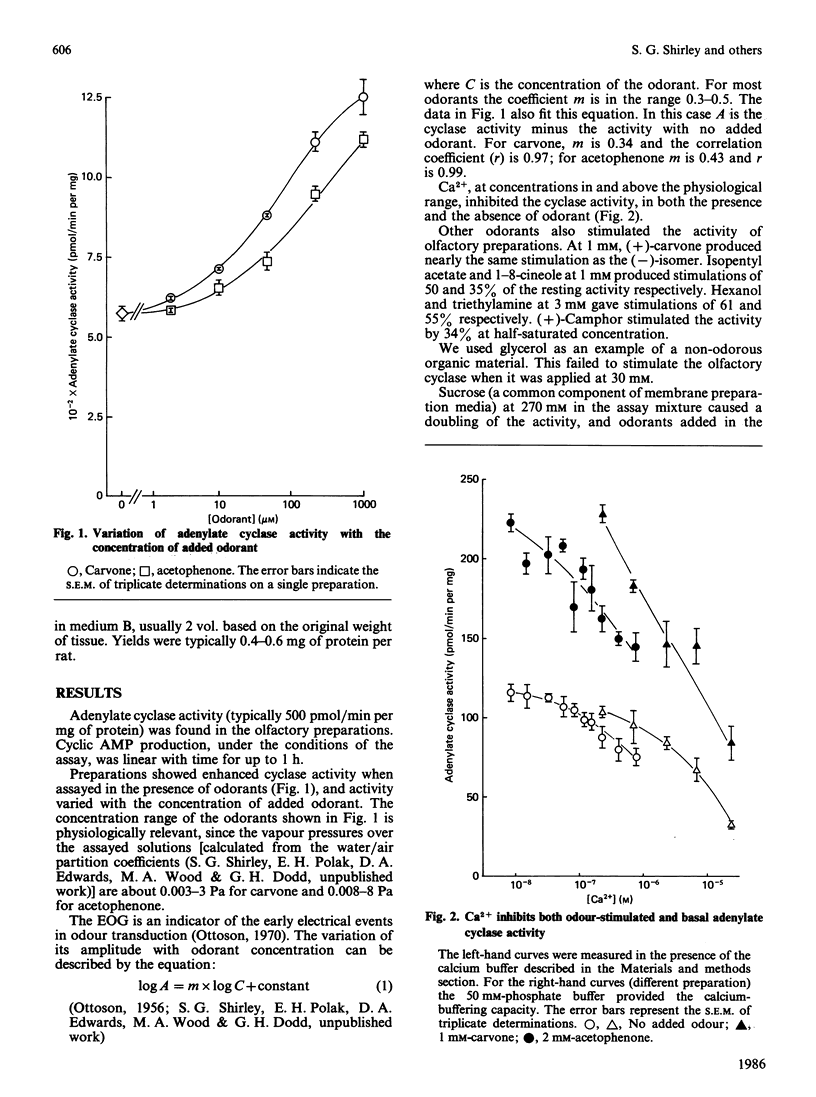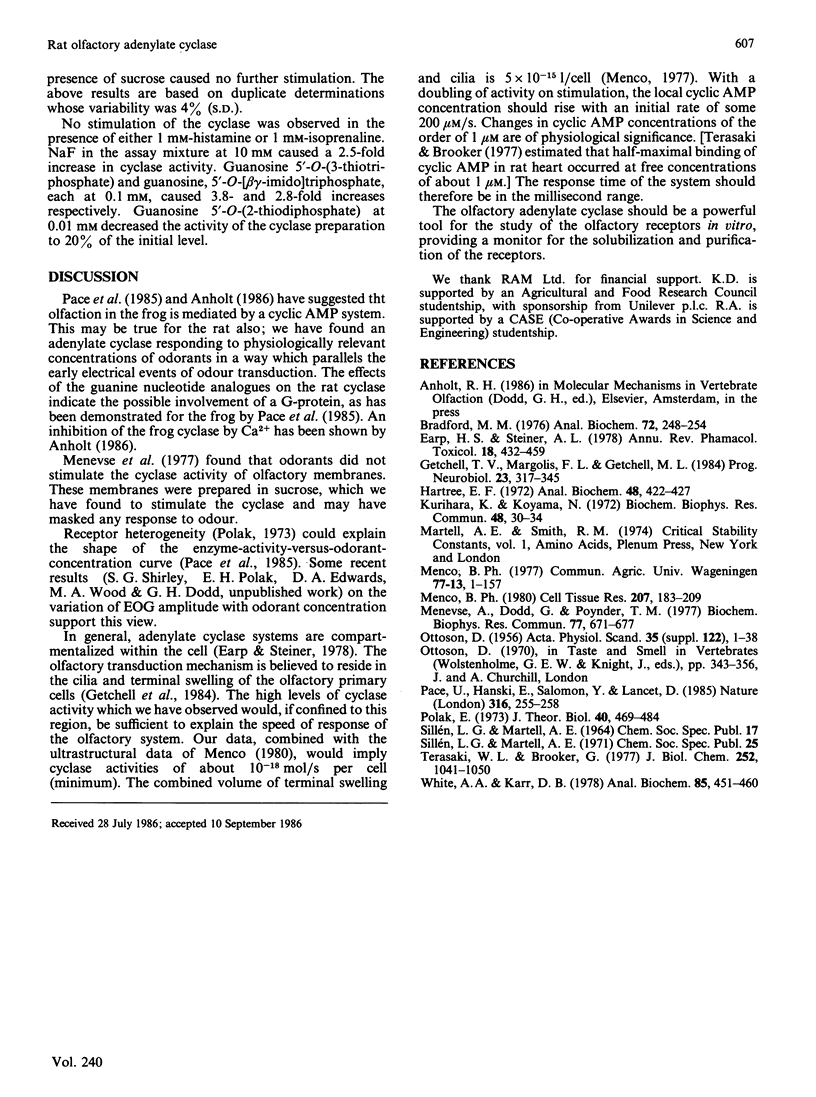Abstract
Membranes prepared from the olfactory mucosa of the rat show a high level of adenylate cyclase activity. The activity increases up to 2-fold in the presence of physiologically relevant concentrations of odorants and is inhibited by Ca2+. The level of cyclase activity found is sufficient to explain the speed of olfactory transduction, which occurs on a time scale of tens of milliseconds.
Full text
PDF


Selected References
These references are in PubMed. This may not be the complete list of references from this article.
- Bradford M. M. A rapid and sensitive method for the quantitation of microgram quantities of protein utilizing the principle of protein-dye binding. Anal Biochem. 1976 May 7;72:248–254. doi: 10.1006/abio.1976.9999. [DOI] [PubMed] [Google Scholar]
- Earp H. S., Steiner A. L. Compartmentalization of cyclic nucleotide-mediated hormone action. Annu Rev Pharmacol Toxicol. 1978;18:431–459. doi: 10.1146/annurev.pa.18.040178.002243. [DOI] [PubMed] [Google Scholar]
- Getchell T. V., Margolis F. L., Getchell M. L. Perireceptor and receptor events in vertebrate olfaction. Prog Neurobiol. 1984;23(4):317–345. doi: 10.1016/0301-0082(84)90008-x. [DOI] [PubMed] [Google Scholar]
- Hartree E. F. Determination of protein: a modification of the Lowry method that gives a linear photometric response. Anal Biochem. 1972 Aug;48(2):422–427. doi: 10.1016/0003-2697(72)90094-2. [DOI] [PubMed] [Google Scholar]
- Kurihara K., Koyama N. High activity of adenyl cyclase in olfactory and gustatory organs. Biochem Biophys Res Commun. 1972 Jul 11;48(1):30–34. doi: 10.1016/0006-291x(72)90339-7. [DOI] [PubMed] [Google Scholar]
- Menco B. P. Qualitative and quantitative freeze-fracture studies on olfactory and nasal respiratory structures of frog, ox, rat, and dog. I. A general survey. Cell Tissue Res. 1980;207(2):183–209. doi: 10.1007/BF00237805. [DOI] [PubMed] [Google Scholar]
- Menevse A., Dodd G., Poynder T. M. Evidence for the specific involvement of cyclic AMP in the olfactory transduction mechanism. Biochem Biophys Res Commun. 1977 Jul 25;77(2):671–677. doi: 10.1016/s0006-291x(77)80031-4. [DOI] [PubMed] [Google Scholar]
- OTTOSON D. Analysis of the electrical activity of the olfactory epithelium. Acta Physiol Scand Suppl. 1955;35(122):1–83. [PubMed] [Google Scholar]
- Pace U., Hanski E., Salomon Y., Lancet D. Odorant-sensitive adenylate cyclase may mediate olfactory reception. Nature. 1985 Jul 18;316(6025):255–258. doi: 10.1038/316255a0. [DOI] [PubMed] [Google Scholar]
- Polak E. H. Mutiple profile-multiple receptor site model for vertebrate olfaction. J Theor Biol. 1973 Aug 22;40(3):469–484. doi: 10.1016/0022-5193(73)90005-2. [DOI] [PubMed] [Google Scholar]
- Terasaki W. L., Brooker G. Cardiac adenosine 3':5'-monophosphate. Free and bound forms in the isolated rat atrium. J Biol Chem. 1977 Feb 10;252(3):1041–1050. [PubMed] [Google Scholar]
- White A. A., Karr D. B. Improved two-step method for the assay of adenylate and guanylate cyclase. Anal Biochem. 1978 Apr;85(2):451–460. doi: 10.1016/0003-2697(78)90242-7. [DOI] [PubMed] [Google Scholar]


